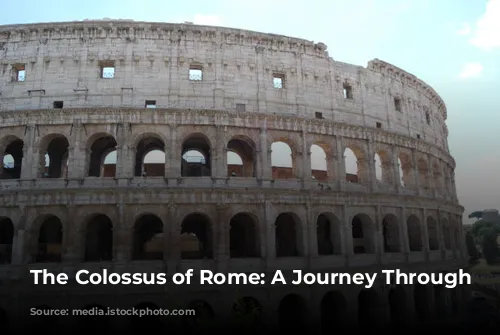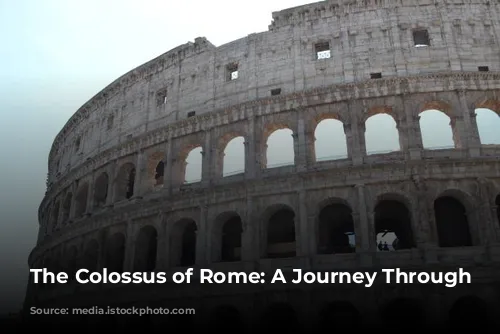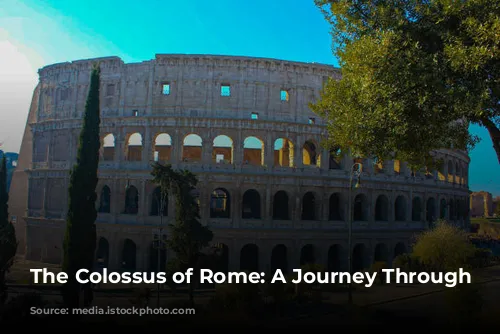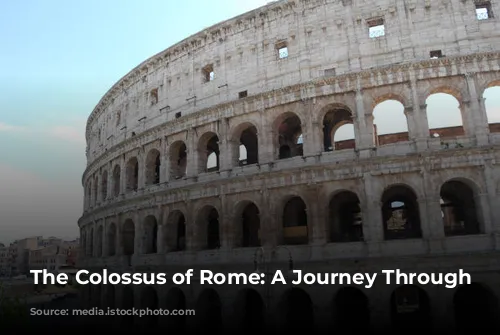The Colosseum, also known as the Flavian Amphitheatre, stands as a testament to the grandeur of the Roman Empire. It is not only the largest and most imposing amphitheatre in the Roman world, but also one of the most iconic monuments in the history of architecture.
A Monument to Flavian Power
Construction of this architectural marvel began under Emperor Vespasian of the Flavia family. His son, Titus, inaugurated the Colosseum in 80 AD with an extravagant opening ceremony that spanned one hundred days. The public was treated to spectacular displays of combat, exotic animal hunts, and dramatic performances, including the impressive naumachia, a re-enactment of naval battles staged on the arena floor filled with water.
The Colosseum: A Name Steeped in History
But why is it called the Colosseum?
The name first emerged in a prophecy by the Venerable Bede, a medieval monk, who declared that Rome would endure as long as the Colosseum stood. This prediction suggests the name “Colosseum” might have originated from the colossal statue of Emperor Nero, known as the “Colossus”, which once stood near the amphitheatre. This statue, towering at 35 meters, is now completely lost to time.
A Marvel of Engineering and Architecture
The Colosseum, originally clad in gleaming white travertine stone, is an elliptical structure designed to accommodate a massive audience. Its four tiers, with the first three boasting eighty arches each, were adorned with impressive statues. Despite its size, the Colosseum was built in a remarkably short time frame – less than ten years. This astonishing feat of engineering was made possible by the Romans’ mastery of the arch, a structural element that allowed them to distribute the weight of heavy constructions effectively. Think of the Roman aqueducts; the same principle of arch construction is evident in the Colosseum’s design.
Time’s Unrelenting Grip
Today, we see only a skeletal version of the Colosseum. Time and the relentless march of history have left their mark, eroding its outer walls and leaving three-fifths of its surrounding brick wall missing. During the Middle Ages, the Colosseum was repurposed as a quarry, with its marble, lead, and iron components plundered for construction projects such as the Barberini Palace, Piazza Venezia, and even St. Peter’s Basilica. The visible holes in the columns serve as a reminder of the extraction process, marking the places where lead and iron were removed for reuse.
A Stage for the Roman Spectacle
Despite the passage of time, the Colosseum’s structure still reveals its original grandeur. The seating arrangement is a marvel of design, allowing seventy thousand spectators to enjoy clear views from every angle. Seating was divided by social status, with commoners occupying the upper tiers while senators, priests, and the emperor held the front row positions.
Just as modern stadiums protect spectators from the sun, the Colosseum boasted an ingenious roof cover, the “Velarium”. This massive linen tarpaulin, controlled by ropes, winches, and wooden poles, required the skilled maneuvering of one hundred sailors from the Imperial fleet. Their synchronized movements, coordinated to the beat of a drum, ensured the smooth operation of this impressive sunshade.
Beneath the Arena: A World of Secrets
Entering the Colosseum, the arena floor, once made of a mixture of brick and wood, is gone. In its place, you can explore the underground cellars that housed the equipment used to stage the games. These cellars contained lifts and hoists, complete with their counterweights, allowing animals and gladiators to be dramatically raised through trapdoors, creating breathtaking surprises for the audience. This innovative use of technology foreshadows the special effects used in modern performances.
The Colosseum: More Than Just Gladiatorial Combat
The Colosseum was not just a venue for gladiatorial combat; it was a stage for a wide variety of performances, ranging from animal hunts to theatrical displays. The arena floor was transformed into a spectacular “forest” for the Silvae events, where animals were exhibited rather than killed. Even a clever elephant, trained to write words in the sand with its trunk, graced the Colosseum stage.
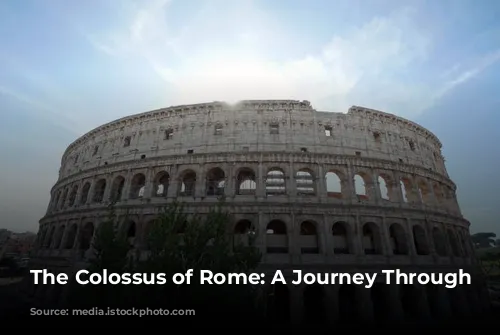
The Rise and Fall of the Gladiators
However, the most popular event at the Colosseum was undoubtedly the gladiatorial contests. The gladiators, often prisoners of war or former paupers seeking fame and fortune, were welcomed as heroes. They paraded into the arena to the roar of the crowd, saluting the Emperor with the famous words “Ave Caesar, morituri te salutant” (Hail Caesar, those who are about to die salute you).
There were twelve types of gladiators, each equipped with specific weaponry. Battles were staged to maximize dramatic effect, and the outcome was in the hands of the Emperor, who determined the fate of the defeated gladiator with a simple gesture: a thumbs up granted mercy, while a thumbs down meant death.
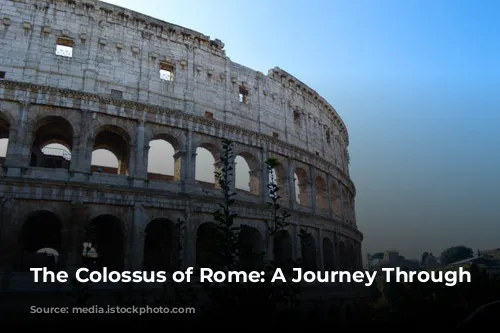
The Colosseum: A Reflection of Roman Society
The Colosseum reflects not only the architectural prowess of the Romans but also their fascination with violence and spectacle. The public’s love of gladiatorial combat was insatiable, mirroring the modern-day obsession with “splatter” cinema. However, the brutality of the Colosseum’s performances was far more visceral, with the stench of blood and burnt flesh pervading the arena.
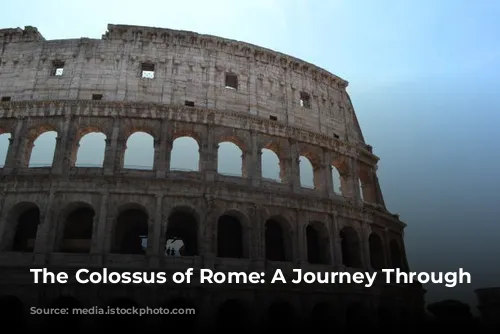
A Legacy of Transformation and Endurance
After the decline of the Roman Empire, the Colosseum fell into disuse, becoming a refuge for various groups, including hermits and even a cemetery. The Colosseum’s fate seemed sealed when Sixtus V contemplated its demolition. However, Benedict XIV intervened, declaring the Colosseum a sacred monument dedicated to the Passion of Christ and placing a cross on its pedestal. This act saved the Colosseum from destruction and transformed it into a symbol of Christian martyrdom.
Today, the Colosseum stands as a monument to the grandeur and brutality of the Roman Empire. Its weathered stones whisper tales of gladiatorial combat, exotic animal hunts, and the relentless passage of time. For tourists, a visit to the Colosseum is a chance to encounter the ghost of old Rome, echoing through the centuries.
